Cars of Winter Blow Through Toughest Tests
By John Gilbert
Any car can feel impressive to drive and live with when the weather is in the 70s and dry, but not too dry. The real test of road-worthiness is when you have conditions that give you trouble negotiating a road, or even seeing one — which made the winter of 2013-14 perfect. Only when we reached the end of May, 2014, did I dare to think winter might be over, because the 2013-14 winter was one of the coldest, harshest, most unrelenting I’ve witnessed.
It was bad elsewhere, I know, but in Duluth, Minnesota, we had both cold and snow in constant or alternating dosages. Records show 76 days when the temperature dipped below zero, with a record 28 of those days in one consecutive stretch. And we’re talking actual temperature, none of this sissy “wind-chill” stuff. Various regional temperatures along the North Shore of Lake Superior — where I live — hit 25-35 below on several occasions, and 98 percent of the big lake’s surface was ice-covered for a couple of months. But along with it, we had something over 130 inches of snow piling up as well on all the roadways and driveways in the area, starting out with the most significant single snowstorm I’ve ever witnessed.
It was in the first week of December, right after a pair of vehicles had been brought to my house for a week’s road test. Talk about good timing! They were a Jeep Cherokee Limited and a Nissan Rogue, both fun to drive versatile compact crossover SUVs. The Cherokee is all-new from the wheels up, and the Rogue is a thoroughly revised vehicle on a platform that will lead Nissan into the future.
The official Duluth Airport snowfall was 29 inches in that 24-hour stretch, although an official weather-watcher who lives farther out on the same North Shore ridge as I do said her official measuring stake is 39 inches long, with a neon pink tip for easy spotting, and that morning she couldn’t find the stake above the surface of snow. So I don’t know how much we got at our yard from that one snowfall, but I’m estimating 42 inches. When I ventured outside the morning after the storm, the snow was hip deep, as I shoveled my way toward the thick white blanket that had been black asphalt just hours before. I climbed into the Jeep Cherokee, after clearing view-panels in the vicinity of the windshield.
I started it, and backed up as far as seemed reasonable, to point the nose toward our rural road. It was reluctant to move that far, and wasn’t convinced moving forward was a good idea, either, making me concerned the whole vehicle might be hung up on the snow. About then, I heard a snow plow going by, and watched as it left about a 5-foot pile of snow as if to seal us into our 100-yard-long driveway.
I broadcast a live morning radio show on KDAL 610am, and I immediately realized that I could shovel or make it to the show, but not both. I climbed aboard again, made sure the Cherokee was in its 4×4 setting, and clicked the selection knob on the console from automatic, past rock, past mud, to “snow,” which electronically assists the vehicle in determining what sort of power might be best for such conditions. Too much power, for instance, can make slippery conditions worse. I shifted the gear lever into low range. To my considerable surprise, the Cherokee churned ahead, with the undercarriage plowing little grooves, so I carefully increased speed near the end of the driveway, and then I hit the gas pretty hard.
A video might have looked like a speedboat bursting through a wave; I hit that pile of snow and blew through it, snow flying in all directions, as I kept churning out onto the rural road. I was free, and the Cherokee hadn’t spun a tire, although our roadway was hardly clear of obstructing snow. I favored the Cherokee for North American Truck of the Year, and going anywhere and everywhere that week was convincing enough to get my official vote as a member of that jury. It finished second, but I’ll guarantee the rest of the voters didn’t match my extreme road-test.
The Cherokee is Jeep’s first front-wheel drive vehicle that switches torque to the rear as needed, and its terrain switch makes it capability remarkable. The Limited was equipped with the 2.4-liter 4-cylinder with Multiair and Chrysler’s new 9-speed transmission, and it had unaggressive all-season tires — nothing special. A couple weeks later, I got the TrailHawk version of the Limited, with the optional 3.2-liter V6 and all the best all-terrain equipment, including big knobby off-road tires. And yes, we got more snow for a similar test on top of the old stuff, but to my surprise, the TrailHawk with its extra power, wanted to spin those knobby tires every time I started up. So I’ll take the Limited with the 4, and the potential to get 6-8 more miles per gallon, and with adequate power and no spinning, and its more-reasonable sticker price starting at $26,495. It’s perfectly balanced for the worst weather or for easy-going highway duty.
I sympathized, a couple of months later, when one of the leading national car magazines presented a major feature on driving in Michigan’s winter with the new Cherokee. The magazine chose to upgrade to the optional V6, then they complained about the fuel economy. Too bad.
The Nissan Rogue has always been a family favorite. The current model will continue to be offered as the 2014 Rogue Select with a base price under $20,000. The new Rogue, all redone, is improved in every way, starting with a stiffer platform called the Common Module Family (CMF) architecture, which is shared with affiliate Renault and will be the basis for future Nissan products. The new Rogue will be priced between $24,000 and $30,000, and will be built in Smyrna, TN., where it joins the Altima, Pathfinder, Leaf, and Infiniti QX50 as newly launched vehicles being built at the U.S. plant. About an inch taller, longer and wider, and with a longer wheelbase, the new Rogue squeezes in an optional third-row seat. The 2.5-liter 4-cylinder engine has a 10.0-to-1 compression ratio but burns regular fuel, producing 170 horsepower and 175 foot-pounds of torque. A significantly improved Xtronic CVT (continuously variable transmission) improves fuel economy to an EPA 33 highway.
The Rogue, also, charged through that snow-filled driveway and was unimpeded by the worst weather week. It doesn’t have all the multi-terrain switches of the Cherokee, but it does have the ability to go from front-wheel to all-wheel, to 4×4 lock, which is where it spent a good part of that week. Like the Cherokee, the Rogue can be bought for under $30,000, and has a reasonable shot at topping 30 miles per gallon, although trying for good gas mileage in blizzard conditions is a shaky proposition.
Granted, there are other vehicles that could handle such ferocious storms, but some couldn’t — particularly those with rear-wheel drive, or with summer or high-performance tires. But among those vehicles that came to me at the right time to find lots of snow, certain vehicles stood out for performing their best in the worst possible conditions:
* Subaru had a strong pair to draw from: the new WRX, which approaches the fun of the flashier WRX-STI but a welcome tad less harsh in handling; and the Crosstrek Hybrid, a startlingly attractive wagon-sized crossover. Both are based on the compact Impreza platform, and both seemed right at home in the nasty stuff, with their all-wheel-drive 2.0-liter powerplants ready to go all day or all night. The WRX was the new 2015 model, and it reduces engine size from 2.5 to 2.0 liters from 2014, with the 2.0 the turbocharged item from the acclaimed Forester, set to deliver 268 horsepower and 258 foot-pounds of torque. The stiffer, firmer and stronger WRX comes off as a worthy $30,000 alternative to the costlier hair-trigger WRX-STI. Snow was no problem. The 2014
Crosstrek is a comparative bargain at just under $30,000, and is among the best-looking Subaru utility vehicles ever, and its normally aspirated 2.0-liter flat 4 has a milder 145 horsepower, but the addition of the synchronous electric motor in the hybrid setup leaves the Crosstrek Hybrid with a combined 160 horsepower and 163 foot-pounds of torque. At only $27,000, the well-equipped test vehicle is impressive, particularly with the manual mode on the CVT.
* Audi is legendary because of its quattro all-wheel-drive system, which auto magazines insist on spelling with a capital “Q” despite Audi’s protests and official spelling. Audi’s recent proliferation of models brought forth more capable winter-beaters than ever, but with three specific for our purposes: The SQ5 was first to show its stuff to us.
The Q5 is a very impressive midsize SUV, and the SQ5 adds all sorts of sports features to the suspension and power delivery, and even though it might have been wise to have better winter-traction tires, the SQ5 barreled through without a whimper. Audi’s 3.0-liter V6 combines direct injection and supercharging to send a potent 354 horsepower and 340 foot-pounds of torque through the refined quattro all-wheel-drive system via an 8-speed Tiptronic transmission, the “S” version separates itself from the standard Q5. Naturally the upgrades cost a bit, and the SQ5‘s base price is $51,900, and as tested it sat $61,420. The S4 sedan gets similar treatment above and beyond the A4, but a compact to midsize sedan doesn’t need as much outright power as a heftier SUV, so Audi limits the supercharged 3.0 to 333 horsepower and 325 foot-pounds of torque, in the S4, sending the quattro system its power through a 6-speed
stick shift. That combination meant the S4 not only cut a dashing figure through the snowy streets, it was also fun to shrug off the indignity of having its flashy red paint job obscured by a lot of road glop. While those two vehicles were prizes, the larger and sleeker A7 showed up later. I once declared the A7 the most attractive sedan in the world, because it is essentially an A6 with a sloping, fast-back roofline. This particular model was equipped with all my favorite stuff, not only the quattro all-wheel-drive system, and the 8-speed automatic with paddle-shift manual capabilities, but instead of the 3.0-supercharged gas V6, this one came with the 3.0-liter turbocharged diesel (TDI) engine. Audi’s turbo-diesel magic means the single turbo delivers a decent 240 horsepower, along with an indecent 428 foot-pounds of torque. Diesels always create scads of torque, which is why they are so impressive in acceleration, and the prodigious A7 TDI torque peaks at a mere 1,750 RPMs, which is barely above idle speed and also right on the tach reading at 70 miles per hour. At a base price of
$68,000, the A7 TDI offers a beautiful luxury car with tremendous power and the ability to get over 30 mpg all the time, and nearly 40 mpg on the highway in more agreeable weather. The test car topped $80,000, which is easy to do with the options. The gleaming white paint on the test vehicle stood out, even after a blizzard, because Audi had slapped large decals on the sides that said “TDI” in huge letters, and “Clean Diesel” smaller. Those large black letters prevented anyone from repeating the joke about seeing a white cow eating marshmallows while giving milk in a blizzard. Maybe branding that cow with large black letters would help. The final winter-beating aces are a bit of a surprise.
* The Volvo S60 T6 is a fantastic sedan and comes with all-wheel drive as an available option. So does the XC60 T6, Volvo’s midsize SUV. These were 2015 models, which seems to have signalled Volvo to play a practical joke on journalists who might be guilty of assuming they could do a superficial job of covering the cars. Volvo has built a strong series of inline engines, including a 4, a 5, and a 6. The T5 used to designate a turbocharged 5 and
the T6 a turbo 6. But for 2015, Volvo carefully stated that it was condensing and refining all its engines, and that a 4 would power all its new cars, replacing the 5 and 6. Curiously, Volvo chose to name the hot new 4, which is both supercharged and turbocharged, by calling it the “T6 Drive-E.” That led some reviewers to write that the company was going to 4-cylinder, but the particular test car was a T6, with the 6. Wrong! It’s the 4. By amazing coincidence, I found both an S60 sedan and XC60 SUV together in my driveway when another blizzard hit. My wife pleaded to drive the XC60 for its greater clearance and all-wheel drive, compared to the lower S60 sedan. After a couple of days, I informed her that, oddly enough, neither vehicle had AWD. It’s just that the front-wheel-drive models handled the 302 horsepower and 295 foot-pounds of torque through their 8-speed automatics, with paddle shifters.The S60 priced at $38,150 with the test model $47,925, and with fuel economy figures of 24 city, 34 highway by EPA estimate. The XC60 showed 22 city/30 highway at a base price of $40,000, up to $50,725 as tested. The beauty is that all-wheel drive is a wonderful asset, but a well-balanced car, built with winter-driving in mind, and mounted with good all-season tires, can convince you it’s good enough to beat the worst winter. Maybe a lot of it is state of mind. Or maybe Volvo has the benefit of Minnesota-like Swedish winters.


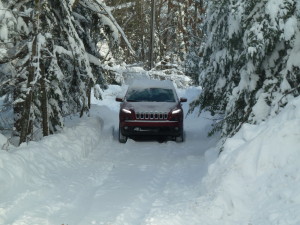
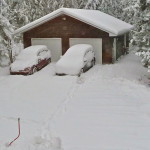

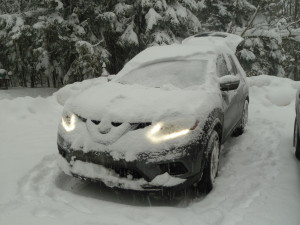

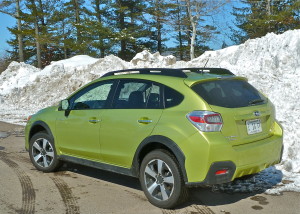
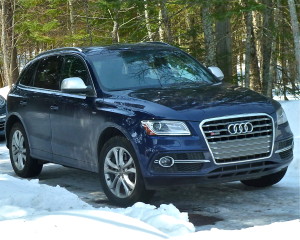
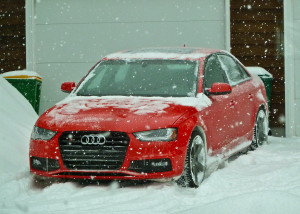
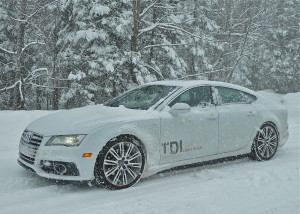
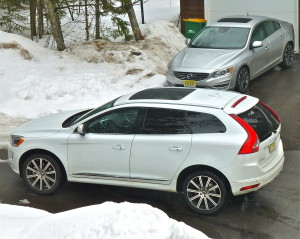
 John Gilbert is a lifetime Minnesotan and career journalist, specializing in cars and sports during and since spending 30 years at the Minneapolis Tribune, now the Star Tribune. More recently, he has continued translating the high-tech world of autos and sharing his passionate insights as a freelance writer/photographer/broadcaster. A member of the prestigious North American Car and Truck of the Year jury since 1993. John can be heard Monday-Friday from 9-11am on 610 KDAL(www.kdal610.com) on the "John Gilbert Show," and writes a column in the Duluth Reader.
John Gilbert is a lifetime Minnesotan and career journalist, specializing in cars and sports during and since spending 30 years at the Minneapolis Tribune, now the Star Tribune. More recently, he has continued translating the high-tech world of autos and sharing his passionate insights as a freelance writer/photographer/broadcaster. A member of the prestigious North American Car and Truck of the Year jury since 1993. John can be heard Monday-Friday from 9-11am on 610 KDAL(www.kdal610.com) on the "John Gilbert Show," and writes a column in the Duluth Reader.